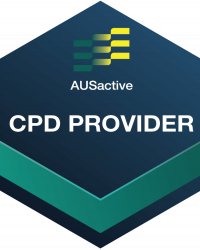Wunda Chair Repertoire
Mobility:
Spinal Mobility: Washer Woman II
Alternate Names
Push Down from the Back
Derived From
Mat Pilates: Roll Up
Primary Element
Mobility
To develop spinal mobility, in particular improve lumbar mobility.
Secondary Element
Stability
To develop transversus abdominis activation and control, and scapula stability.
Tertiary Element
Repetitions
6-8
Apparatus Setup
Suggested springs
- Exo Chair by Balanced Body
- Cactus style number system
- one spring on setting 2
- Cactus style number system
- Resistance: light
Scan the apparatus once the client is moving for the correct set up
- The pedal position, checking the dowel is secure if working on a split pedal Wunda Chair
- The springs are secure and set to the intended resistance
Place foam matting or a pad over the base of the Wunda Chair underneath the pedal to stop the pedal ‘crashing’
- Springs second
- Handles or small apparatus such a ball or Magic Circle last
Plane of Motion
Sagittal
Targeted Muscles
Abdominal muscles – transversus abdominis, the deepest layer of abdominal muscles. Its role is to support the torso by maintaining abdominal wall tension which stabilises the spine and pelvis.
Warnings
This exercise is not suitable for spinal issues or pathologies where flexion is contraindicated or would cause pain. It can also be challenging for clients with tight hamstrings and a high lumbar spine.
Execution
Start one footstep away from the back of the Wunda Chair, and stand with the heels together and toes apart in a Pilates V-position. Reach the arms upwards above the head towards the sky, press through all four corners of the feet and hug the back of the legs together, with the hips over the heels, roll the spine down and reach forward over the seat of the chair so the hands are connected to the pedal.
Flex forward, pressing the pedal down, and pause at the end of range, try to flatten or straighten the spine (even going slightly into extension), before rounding the spine again to lift back up to the start position from the abdominals.
Observations
Do a body scan of the client taking note of the following points
Pelvis
- Are the hip bones even horizontally or is the client leaning to one side?
- Is the pelvis tucked posterior?
- Is the pelvis pushing back as the client rolls forward. The hips need to stay over the heels to let the abdominals do the work
Legs
- Are the knees locked?
Feet
- Are the insides of the feet lifting or leaning outward? (supinated)
- Are the insides of the feet rolling inward? (pronated)
Apparatus
- Is the pedal banging at the bottom? Increase the spring load so the client can control the springs and reduce the range of motion
Learning Style Technique Cues
Auditory – word associations that connect mind and body
- Keep the pelvis over the heels as you round forward and down, trying not to let the bottom sink back, instead lift up more through the centre or abdominals. Try not to lean back
- Step back and bend the knees slightly if the hamstrings are tight or there are lumbar spine restrictions
- Say the client’s name when you’re about to interact with them
Visual
- Imagine one long line from the tailbone to the crown of the head, keeping the head aligned with the spine throughout the various spinal positions
- You may demonstrate a part of the movement as a visual representation for the client to see
Kinaesthetic
- Feel the abdominals draw in when pressing the pedal away
- Move the bottom of your ribcage in at the front and expand it at the back as you roll down
- Press the pedal down only so far as the weight stays in the feet and you don’t feel yourself rocking forward
- Press the heels into the floor and resist the springs as the body returns to upright
Modifications and Variations
Keep within the theme of Washer Woman I and bend and press the elbows three times whilst in the flat back or slightly extended spine position, before rounding the spine and returning to the start position.
Regress the exercise by
- Reducing the spring resistance to one spring on setting 1 to feel the sensations of the exercise more, and reduce the repetitions
- Stand behind the client as a guide so if the client is leaning back in the exercise they can feel themselves bump into your hands or a prop as a reference point, or move the Wunda Chair almost against a wall so there is only a certain amount of space to work in
Regression Repertoire to work on:
- focusing on closing the carriage to park or the stopper
- Reformer Semi-Circle
- focus on the various spinal positions
- Mat Pilates: Pelvic Curl
- to practice spinal mobility
Progress the exercise by
- Adding spring resistance, repetitions and/or pace. The heavier spring setting will feel easier at first but it is harder to control and still have the same level of abdominal engagement. The challenge is not to let the spring take over and do the work
- Stepping closer to the base of the Wunda Chair so it is more challenging to keep the pelvis over the heels (greater abdominal connection and control as well as spinal mobility)
- Removing one arm and placing it behind the head for a single arm variation (the challenge is to stay centred)
Progression Repertoire to work towards:
- Wunda Chair: Cat Stretch
- Cadillac: Cat Stretch
Series and Transitions
This exercise is part of the Push Down Series including Push Down from the Front, Push Down Kneeling and Push Down from the Side.

